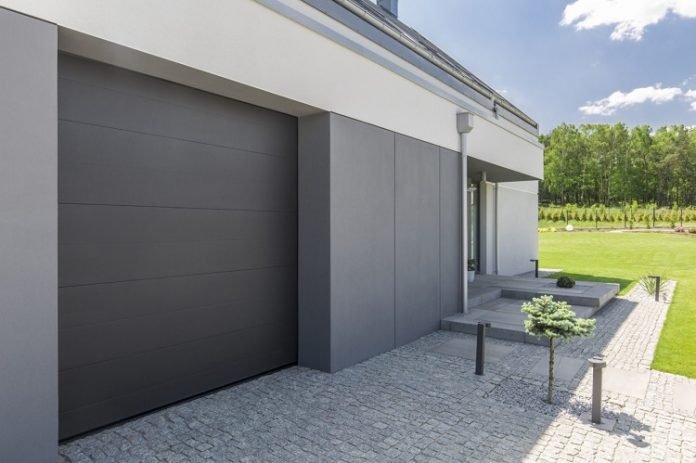Last Updated on March 23, 2024 by Saira Farman
Did you know that you can double a garage door’s lifespan up to 30 years with some care and attention? Suppose your current door is on its way out and it’s time to look for a new one. It can be stressful deciding what door to choose, especially if you’re keeping it for that length of time. And as you know, the garage door is one of those things that you don’t think about until it breaks down. It can be a hassle to get out and fix. So here are some tips on choosing the best garage doors for your home and making them last a lifetime!
Table of Contents
1. Material of Garage Door
Garage doors come in a range of materials. Each has its pros and cons, depending on your personal use case. Here are some examples:
Wooden Garage Door
Wooden garage doors have been around since the beginning of time. They’re very durable, but they can be expensive to maintain. Wooden garage doors also need regular painting and staining, which is not always easy to do yourself.
Most wooden garage doors comprise solid hardwood lumber and come in many colors. If you want something unique, you could paint the entire exterior surface black. Regular cleaning helps prevent mold growth which might cause health problems.
Suppose you want something that looks great without much maintenance. Then a wooden garage door might be perfect.
Metal Garage Door
If you need a very strong garage door, then steel garage doors will fit the bill. Steel garage doors have galvanized metal sheets welded together.
Galvanizing makes them rust-resistant. That way, it won’t affect their appearance over time.
Yet, suppose you live somewhere with extreme weather conditions like hurricanes or tornadoes. Then it would help if you considered installing storm-resistant garage doors instead. Storm-resistant garage doors use aluminum alloy.
Aluminum is more vulnerable than steel when exposed to high winds. But unlike steel, aluminum doesn’t rust too easily either. So if you don’t mind spending extra money on your garage door, go ahead and get one!
Glass Garage Door
Glass garage doors are becoming more popular. That’s because they offer many advantages compared to other garage doors. Glass garage doors look beautiful and modern.
It’s also easier to clean glass garage doors as opposed to wood ones. The only downside about glass garage doors is that they’re prone to breakages.
That means that you’ll have to replace broken parts often. Also, glass garage doors aren’t suitable for areas where there are frequent storms.
2. Style of Garage Door
The size of your garage plays a big role in choosing the right type of garage door for you. For example, if you plan to store large items such as cars inside your garage, you may choose a larger garage door.
Modern Garage Door
A modern-style garage door is sleek and stylish. Modern garage doors tend to feature rounded corners and smooth edges.
These designs make these doors more appealing to the eye. Some people even prefer this design because it gives off a sense of openness. On the flip side, though, modern garage doors often cost more than traditional styles.
You can find examples of the most stylish modern garage doors at this link: https://www.portesdegaragemb.com/portes-residentielles-garex
Traditional Garage Door
Traditional garage doors are generally rectangular shaped and painted white. There are two main reasons why most homeowners opt for traditional garage doors.
First, they provide better insulation against heat loss during the winter months. Second, they give off a classic feel.
Traditional garage doors are less likely to attract thieves. Some burglars avoid breaking into homes with traditional garage doors. That’s because they feel there’s little worth inside.
Color of Garage Door
Color choices vary depending on what kind of home you own. A red-colored garage door would work well in houses with brick exteriors.
Meanwhile, blue colors would suit those with stone facades. White garage doors are best suited for homes with light-colored interiors. Black garage doors are ideal for dark rooms.
3. Type of Garage Door Mechanism
There are three garage door mechanisms: roll up/roll down, tilt up/tilting down, and sectional. Each mechanism has its pros and cons. Let us take a closer look at each option below.
Roll Up / Roll Down Garage Door
This type of garage door opens by rolling upwards. When closed, the top part of the door rolls downwards until it reaches the bottom. Then, it stays closed until someone pushes it back up again.
These run on a track that runs along with the ceiling above the opening that either concertina or wrap around themselves like a shop shutter.
You can open it using hand cranks or via remote control devices. If you want something simple but reliable, then this might be the perfect choice for you.
Tilt-Up / Tilting Down Garage Door
Tilt-up garage doors are like roller shutters, except that they are one solid piece. Instead of having separate panels, they consist of one upward tilting panel.
Unlike rollers, they don’t need tracks to operate. But, they do need an extra hinge so that the entire unit doesn’t fall over.
Sectional Garage Door
Sectional garage doors have many sections that slide together like puzzle pieces. Sections come in various sizes and shapes. The largest ones have four parts; smaller versions only have two.
That makes them easier to handle since there are fewer moving parts. Sectional garage doors also allow you to customize their appearance. With enough time and effort, you could create any shape imaginable.
Side-Hinged Garage Door
These are less common nowadays, with most homes owning many cars – but they’re still a beautiful addition to any home. Side-hinged garage doors hinge on both ends instead of on one side.
That means these doors swing outwards rather than inward. It’s more difficult to install because of how much space should be between the wall and the door. It’s also less practical than doors that run on tracks.
4. Total Cost of Ownership
The total cost of ownership is how much maintenance costs will be after installation. TCO includes both initial buying price plus ongoing monthly expenses.
Suppose you want to save money on your garage door replacement project. You can always buy new garage doors rather than repairing old ones.
New garage doors last longer than older models. They need fewer repairs too. That said, buying new garage doors isn’t always cheaper than fixing existing ones.
Buy Price
Consider purchasing quality materials when replacing an old garage door. Quality materials include steel, aluminum, and fiberglass.
Fiberglass garage doors are lightweight and easy to install. Yet, they don’t hold their shape well over time and may cost you more in the long run.
Garage Door Insulation
Insulating your garage helps keep out cold air from entering your house in windows and doors. It also prevents warm air from escaping when you’re working outside. The good news is that insulating your garage doesn’t have to break the bank.
Many DIY projects allow you to install inexpensive materials. These include foam board and fiberglass mats. But there’s no harm in investing in high-quality products either.
Home Resale Value
If you plan to sell your home someday, it pays to invest in an insulated garage door. An old door can detract potential buyers of your home if you’re thinking of selling at any point soon. On top of that, having an insulated garage door makes your home more energy-efficient.
Safety Features
A well-installed garage door should include safety features, including sensors and remote controls. Sensors help prevent accidents caused by children or animals from getting crushed.
Average Repair Costs
Before installing your new garage door, check whether the existing one is safe to remove. For best results, you should always install garage doors using a professional. Professional installation ensures that all necessary safety measures are complete to high standards.
Longevity
The average lifespan of a garage door ranges between 15 years and 30 years. Most homeowners replace their garage doors once or twice during this period. Replacing them sooner means spending less time maintaining them.
5. Repairability
Having a garage door that lasts a long time is imperative in keeping the total cost down. But, it’s also only worth it if you aren’t going to need to overspend on regular maintenance along the way. So here are some things to consider for repairability:
Ease of Repair Access
It may seem obvious, but the ease of access is key. When choosing a brand, make sure that its components are easy to reach without tools. Also, look at the size of the opening.
That way, you don’t end up with a large piece of equipment taking up valuable space inside your garage.
Cost-Effective Materials
When shopping for garage door material, choose something durable yet affordable. For example, wood garage doors tend to be expensive because they take much effort to maintain.
Steel garage doors are cheap but not very strong. Vinyl garage doors offer great value for money but are prone to cracking.
Quality Repairs
When looking into different brands, ensure that they provide reliable service. A reputable company will give you free estimates and follow through with any work needed. Look for companies who use qualified technicians and guarantee their services.
Sourcing Garage Door Parts
Look for a manufacturer that offers a wide range of spare parts. If you find yourself needing repairs often, then you’ll save money in the long run and not have to replace the entire door again.
Warranty
Most manufacturers offer warranties ranging from 1 year to 5 years. Make sure that the warranty covers both labor and replacement parts. Some manufacturers even cover damage due to weather conditions.
DIY vs. Specialist
Should you do it yourself or hire a professional garage door specialist to fix a garage door? There are pros and cons to each. So let’s take a look at these as you’ll need to budget servicing costs if you choose the professional route.
Pros and Cons of Hiring Professionals
Professional installations are a good first-time solution. These solutions save you time and hassle later on. Plus, professionals know what they’re doing.
They’ve got experience dealing with similar situations. And they know how to handle any mishaps along the way.
That said, It can get costly! The initial price tag might deter you from hiring someone else. Yet, there are ways around this.
By getting several quotes online, you can compare prices across many providers. Then, contact those businesses to see which ones fit within your budget.
Pros and Cons of Do-It-Yourself
Yet, DIY jobs are simple by comparison. All you need is basic knowledge of mechanics and carpentry skills. But, there can still be problems. The most common ones include:
• Poor fitted hinges which could cause the door to fall off track
• Improper installation of rollers causing the door to jam
• Misaligned panels leading to uneven gaps
• Damaged cables resulting in poor operation
So whether you decide to go DIY or get help from an expert, make sure you have all the information you need. That way, you won’t spend more money thinking you’re saving money!
Choosing the Best Garage Doors
Choosing the best garage doors for your needs isn’t always easy. But by following our tips above, you’ll soon be able to narrow down your options and pick out one that suits your home. Good luck!
Check out more of our articles for more exciting ways to make your house a home!
Apart from that, if you are interested to know about Garage Door Repair Information then visit our Home Improvement category.



























